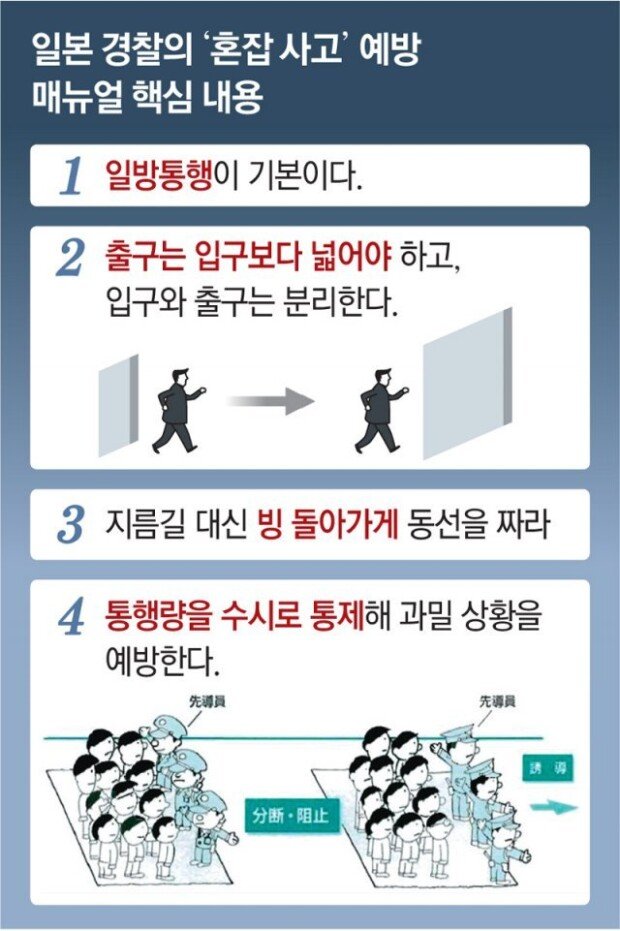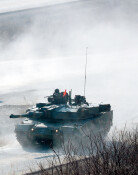Japanese police manual recommends one-way passages and exits wider than entrances
Japanese police manual recommends one-way passages and exits wider than entrances
Posted November. 02, 2022 08:02,
Updated November. 02, 2022 08:02

In 2001, eleven people died due to fireworks crowd surge in Akashi city of Hyogo Prefecture, Japan. In 2002, the Hyogo Prefecture Police Agency drafted a 107-page manual for preventing accidents in crowd surge to prevent any such tragedies in the future. The manual has been used as a national guideline in Japan because it was written by the organization in charge of addressing the disaster on site under a thorough look back on what happened and what the agency did wrong in response.
The manual includes measures such as allowing one-way passages only in crowded places, creating exits wider than entrances, trying to maintain human traffic in straight lines, and banning any obstacles in the passages, all of which were not followed in the Itaewon Halloween disaster. Professor Toshihiro Kawaguchi of Societal Safety Sciences, Kansai University said in an interview with the Dong-A Ilbo that a minor behavior can trigger a major disaster in crowded places. He added that just applying the rule of allowing one-way passages only can make places significantly less crowded.
The manual says that places for large gatherings must, in principle, be open spaces. It also recommends that human traffic be guided in lines as straight as possible or with minimum angles at least.
The manual points out that the entrances and exits should be located separately, and the exits must be wider than the entrances to prevent any clogging in the human flow. There should not be any stairs on slopes and inclines; if there are, they must be wide enough to prevent any risk. It stresses that all passages should be one way to ensure no dangerous cramming. If one-way passages are not doable, median strips should be installed, or security people should create a human strip to separate the human traffic moving in opposite directions. The manual offers other tips, such as constantly cautioning people in human traffic to keep walking and immediately warning those who stop to take pictures or videos.
The manual also recommends that human traffic routes be created in long detours, even for short distances, because people may flock to shorter paths.
Information on crowds and crowded places must be given as often as possible in easy words, according to the manual. It says there may be people of diverse educational backgrounds, so it is best to avoid any police terms, jargon, homonyms, and Chinese characters. For example, acquired items can be rephrased as things found. The manual even contains extremely detailed tips such as keeping the announcements broadcast repeatedly short in less than 45 characters and pausing for one second between words and two seconds between sentences.
sanghun@donga.com
Headline News
- Internal rebellion investigation transferred to Public Prosecutor's Office
- Gov’t to approve Yongin Semiconductor National Industrial Complex
- US conservatives rally around Trump’s third term
- Lee Hyo-song named youngest Rookie of the Year in JLPGA history
- Controversy escalates over the appointment of Constitutional Court justices







